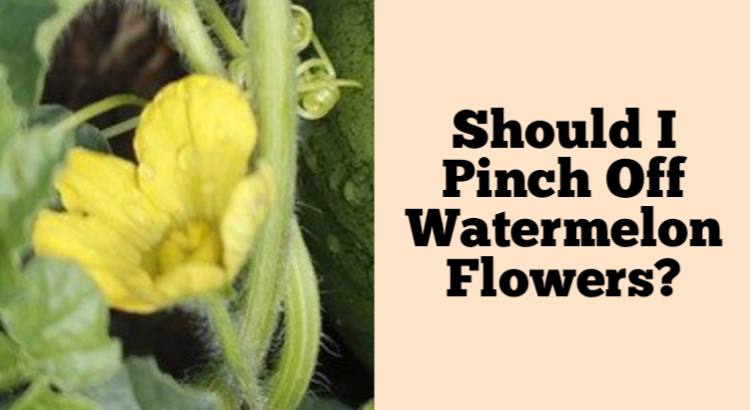Watermelons are the quintessential summertime snack. They’re delicious, refreshing, and there’s nothing like biting into a juicy slice of watermelon on a hot day. But what about those little yellow flowers that grow on top? Should you pinch them off? The answer is no.
Don’t pinch off watermelon flowers.
Watermelon flowers are should NOT be pinched off. Pinching off the flower prevents pollination, which is necessary for fruit production. Watermelon plants rely on insect pollinators to do their job, so it’s crucial that you don’t disturb these insects by removing their food source – namely, the watermelon flower.
If you’re having trouble getting enough bees and other bug to pollinate your zucchini or watermelons, then it may be necessary to manually pollinate them yourself with a paintbrush or cotton swab.
You can tell when this might be necessary by looking at how many blossoms are left on each plant; if there aren’t enough left over after six weeks or so, then hand-pollinating will help ensure that they produce well into summertime.
Let the plant pollinate itself.
Watermelons are part of the Cucurbitaceae family of plants—they’re related to other fruit like cucumbers and squash. Did you know that all of these plants can reproduce without any help from humans? Watermelons are no exception.
They can grow on their own without assistance from humans once they’ve been planted so long as they have enough heat during the summer months (which is why growing in greenhouses is often done).
The blossoms on a watermelon plant will open once they’re ready for pollination, which means that bees or butterflies may come visit them while they’re still attached to their stems instead of just dropping off like most other types of blossoms do after opening up fully.
Once pollinated by one of these insects or birds who visits its flowers’ pollen sacs–which becomes sticky after being coated with nectar–the seeds inside will form into melons within several weeks time; however, this does not mean that every seed produced by every blossom will create another fruit.
In fact only about 1/3rd will end up producing fruit thanks to factors such as disease resistance in certain genetic lines versus others
You may need to hand pollinate.
If you grow watermelons and they are not self-pollinating, you may need to hand pollinate. The process is very simple and only takes a few minutes per vine.
Hand-pollinate when the pollen on the male flowers is dry and powdery (otherwise known as being “ripe”). If you have more than one variety growing at the same time, it’s best to hand-pollinate only one variety at a time so that cross-contamination doesn’t occur between different varieties within your garden space.
Take a small paintbrush or Q-tip and gently brush against each female stigma until it becomes sticky with pollen from the male flower above it. If possible try not to disturb any other stigmas on neighboring plants; this could result in accidentally transferring unwanted pollen between different plants.
Know when to stop planting.
Believe it or not, there are places where you can plant watermelon in the fall. This is called a “fall planting.” Many people think that this is a good idea because they don’t have to spend much money on seeds and fertilizer—but the truth is that it’s not recommended.
Fall plantings are more likely to produce weak plants, which may not be able to handle frost or other problems.
A greenhouse will help keep your watermelons warm during winter months, so they can grow strong roots and shoots while the weather outside isn’t favorable for plant growth.
Greenhouses are also mobile—you can move them from one area of your yard to another as needed.
Don’t pinch off watermelon flowers – let the plant pollinate itself, or help with hand pollination if needed.
If you’re growing your own watermelons, and want to learn more about how plants reproduce, hand pollination is an excellent way to do so. Hand pollination can be done when the flower opens up from its first bloom.
To start, gently pick off the petals around one side of the center pistil and stamen with your fingers or tweezers. Then use a small paintbrush (or even just a cotton swab) to transfer pollen from one flower’s stamen to another’s pistil in order for fertilization to occur.
Conclusion
Watermelon is a great plant to grow and harvest, but not all plants will have the same success. You need to know when you should pinch off watermelon flowers, and when you shouldn’t. Usually, watermelon should not be pinch in order to pollinate more flowers and produce more fruits.

